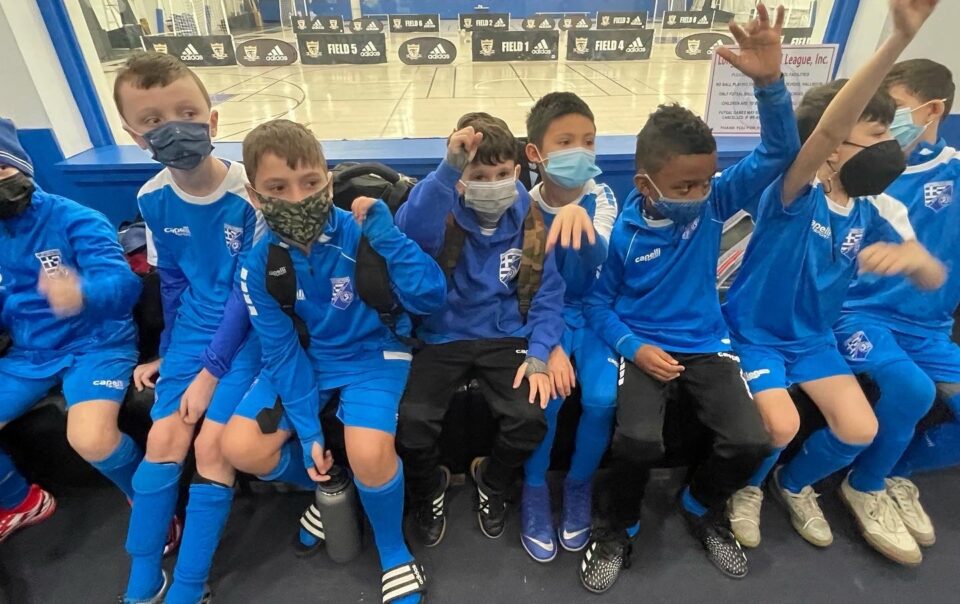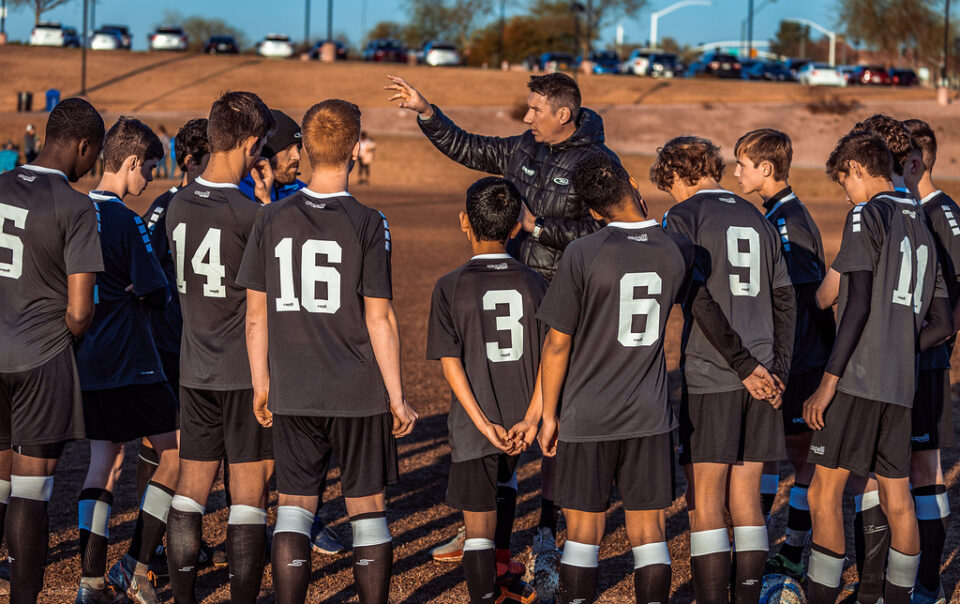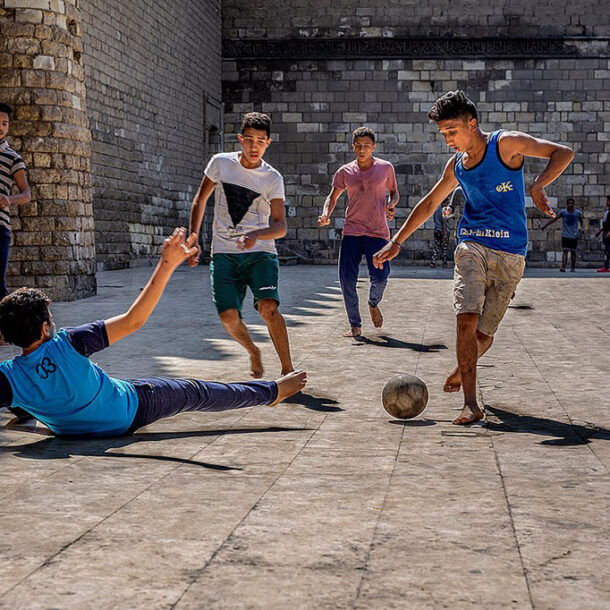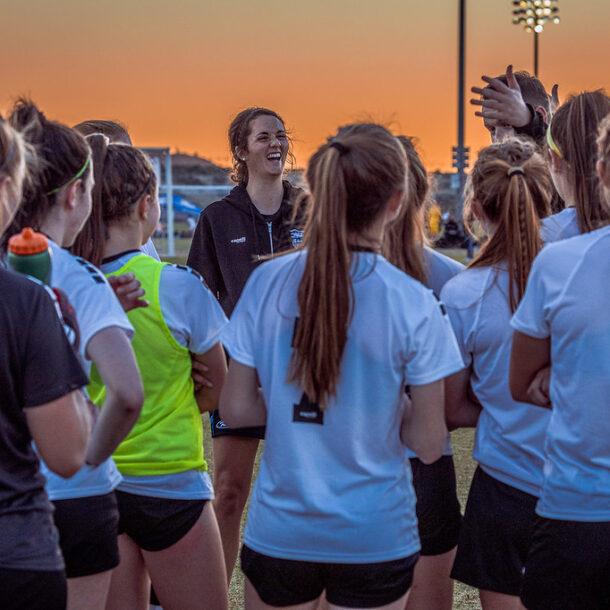
After a month of much discussion and analysis on how to design Player Centered Sessions, we found several valuable concepts that can be incorporated to the way we design sessions.
In simple words, if we want to discuss designing player centered sessions, we need to start by answering two questions: What’s a player centered approach? And why is it important?
What’s A Player Centered Approach?
In words of Juan Gonzalez Mendia, Director of Sudamerica Coaching (watch the full webinar here):
A player centered approach is about putting the participant at the center of the learning process. It’s about the decision making. Most of the environments in sports in the last 20 years have been related to education, and in the last 50 or 60 years (if not more) education has been related to somebody on a step, literally, telling the participants what they need to learn. If they were lucky, they would also hear ‘why’ they need to learn it. A participant centered approach is the opposite. This is a real story that serves as an example. I started teaching at a school years ago, in 2008, and the classroom had a step, so in my first week I turned that step into a stage. I moved my desk to the back of the room, and we turned the step into a stage in which the student would perform, express himself/herself, or present”.
As you can infer from this passage, in a participant centered approach the role of the teacher (coach) relates more to facilitating than it does to instructing.
Why Is It Important?
A Player Centered Approach is vital for us in it’s alignment with our core belief that the game is the teacher (or the best learning environment), and therefore the coach works as a facilitator. Quoting The Heart Of The Rush:
At Rush Soccer, we believe that the game is the teacher. It is in the complexity of the game where skills and creativity arise and develop, not in isolated, mechanized situations. These last can introduce a concept or a technique but can never be the core or the proposed channel for learning. It is in the game that the player discovers solutions and creativity arises, and it is the role of the coach to facilitate that environment and guide, when needed, through that discovery. It’s participant centered, not coach centered.
Building off of that base, the question that arises is how the Rush Way materializes this player centered approach.
The answer relies in the application of The Rush Blue Thread, a set of eight connected principles pursued in every session to ensure a top player centered learning environment is facilitated. That’s what was discussed by a panel on March 11th, when Pablo Toledo, Rush Soccer’s Coach & Player Development Director, was joined by several Rush Technical Directors including President Tim Schulz, Coach Education Consultant Megan McCormick, and Rush Canada’s Technical Director Slobodan Pavlovic, among others (Click HERE to Watch!).
“The question we were asking ourselves was: Knowing and respecting that every Rush club works on a different landscape and we are 100 clubs, how can we still be 1 and provide a similar player centered learning experience? That’s how and why we thought of these eight principles to design and execute training sessions that we call The Rush Blue Thread”, Pablo explained.
The Rush Blue Thread principles are:
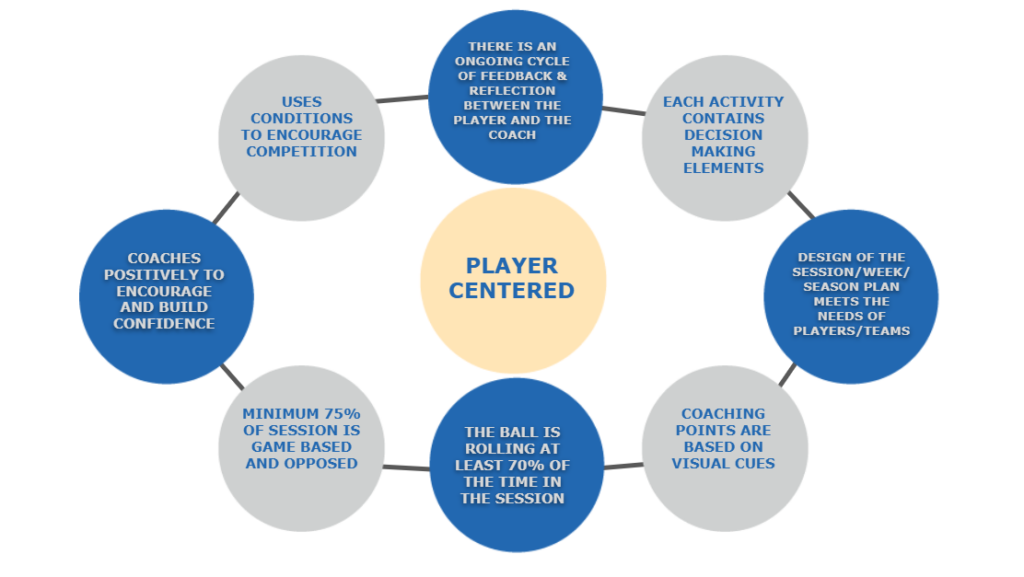
“If we could get every Rush coach to do this, we would be miles ahead of any other club, maybe in the world”
Megan McCormick, Rush Soccer’s Coach Education Consultant.
OTHER LEASONS LEARNED ABOUT DESIGNING PLAYER CENTERED TRAINING SESSIONS:
1) Design Activities with Intentional Feedback: “It seems obvious that learning requires clear (and accurate) feedback. We knowing nod our heads when we hear that the more quickly the feedback is given after a decision, the more likely it will “stick”. Many coaches’ first instinct is to begin planning and considering coaching points and verbal information they will give during a session. However, the most consistent and immediate feedback in a training session comes directly from the activities (the game). Thoughtful session planning allows a coach to carefully tune the feedback loop for players, to ensure that the information is clear, accurate, and timely, even when the coach doesn’t verbally reinforce it”, Megan explained in her wonderful article ‘Key Considerations’ (Click HERE to read!).
2) When designing a session, ask yourself: Would I enjoy this? This might seem simple but it roots down to the core of learning. As Juan Gonzalez Mendia said in his last webinar: “For the longest time we thought that fun was important for learning, that if you enjoyed what you were doing you’d learn more and faster. We were suspicious about this, now science has proven it”. If you want to keep your players ‘engaged’ with the topic, observe if the session is enjoyable. Scott Mills spoke about this as well (Click HERE to Watch): “I think that the players respond to that and something they enjoyed it’s also teaching them. That’s the best part”, Scott stated. “We’ve all been kids and -I guess- we all love playing soccer, so imagine for a second that you will be part of the activity and self-reflect on how that session would be enjoyable”.
Russell Earnshaw linked many of these concepts as well in what he summarizes as seeing the session from children’s eyes. Rusty’s story about how he spent a day shadowing a child to understand their perception and feelings around the daily activities he participated in, to conclude that it was a really, really boring day added a bit of humor. “If we are really player centered, then why aren’t the children running lessons and sessions or at least being part of it?”, he wondered during his interview with Chris P. (Click HERE to Watch).
3) Ask players to provide their own objectives/goals for a game, or coach providing objectives: We took this one from Scott Mills, and I struggle to find an even more participant centered idea: “Each of our players have a pentavalent plan and define objectives for short, medium and long term for them. You (coaches) then help them, for example, if one player said ‘I really want to improve my speed and agility’, we will see the design of sessions that suits that goal. We also ask them to set an objective for the match, so we’ll ask them ‘how are you going to achieve that?'”.
4) Plan Your Response to Failure: It’s normal for players to struggle in training. In fact, we expect (and want) some failure to take place. Quoting Juan Mendia again: “If I watched a session and the players were always succeeding, I’d invite the coach to review that session, because something is not working”. The question that really matters is: What will my specific and purposeful response be when the player(s) makes this particular mistake?
5) External Focus of Attention: Megan highlighted this one (note how important we think it is that it is part of the Rush Blue Thread). This is about visual cues. It is our responsibility as coaches to make sure players have the tools to evaluate their own success or failure by observing the external outcome. Without thoughtful guidance, players might rely solely on the final score of the game to judge their performance. As coaches, we are constantly taking in so many visual cues and often leave them out of our verbal feedback. Taking the time to plan how you will help players watch for the things you see as a coach can pay tremendous dividends.
Please note that we are talking about literal things to observe, the focus is in what you can SEE. “Great pressure! Did you see how the attacker kept her head down and wasn’t able to look up?” That could be a great way to teach a young player about distances for the pressuring defender, or “she was able to pick her head up and survey the field which means you need to close more space”. These simple phrases will help the player self-evaluate her action every time she is required to provide pressure.
Using two simple questions before training can help make sure we are aligning a player’s external focus with our own: What actions/behaviors am I trying to teach? And, What specific things can a player SEE if they do this well? If they fail to do this well?
6) Building Mental Engagement & Planning The Conversation (Click HERE to read): Updated coaching education programs have introduced us to guided discovery and the use of questions to share our coaching points. However, the skill (or lack thereof) of crafting and asking questions can dramatically increase (or decrease) player engagement. If we are interested in putting the player at the center of the session, it’s time we all revisit the way we use questions. The goal is to have EVERY player in the session thinking deeply about EVERY question you ask as a coach. A loft goal to be sure but one well within our grasp with the right techniques.
Check the Chart below:
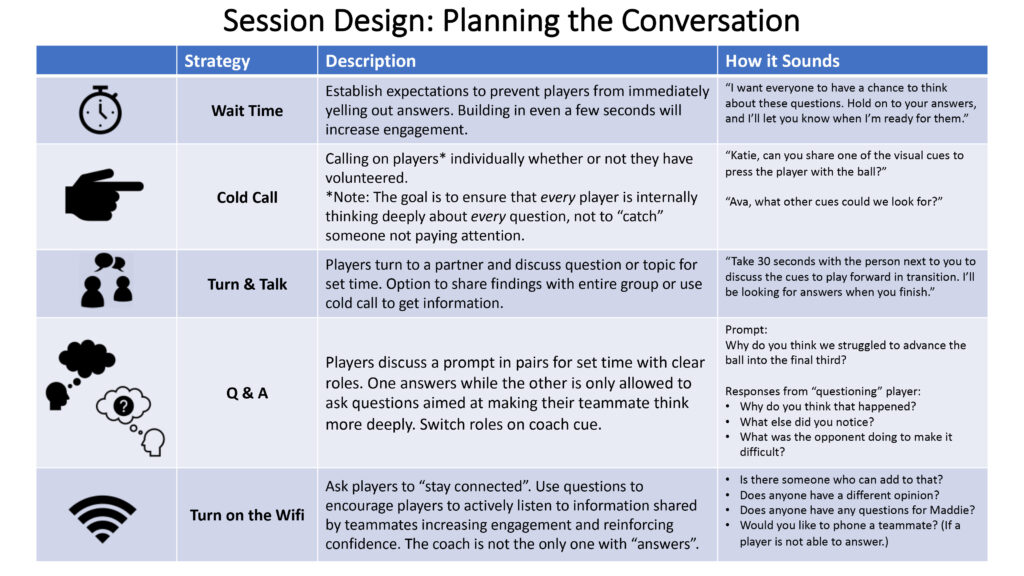
7) Random vs Block Training: We stated at the beginning of this post that a Player Centered Approach has it’s roots in decision making. Sean Connors, our Goalkeeping Global Director, presented as well about how this approach materializes within Goalkeeping specific training. That’s what the Random vs Block Training Webinar was about.
“Block Training is a traditional approach, it’s what you’ll see in most fields. A defined number of repetitions, repeating them over and over, so that the focus is on the execution”, Sean explained (Watch it HERE!). “Random, on the other hand, means different activities, don’t do the same thing twice, and the key is to read the situation, plan the situation and then do. Adding those two steps (reading & planning) is the main difference between Random and Block Training. Random not only focuses on technical execution”, he added.
Below, a brief and informative example of both types of GK training:
“So often we think about ourselves as Goalkeeper coaches training technique and execution, that tends to be the focus. But it doesn’t matter if you can catch a ball if you are not in the right place, if you haven’t made the right choice to catch the ball. That situation has got to become the focus”, Sean stated.
A lot to digest coach, we hope you enjoyed the learning this month. Stay tuned for April’s!


